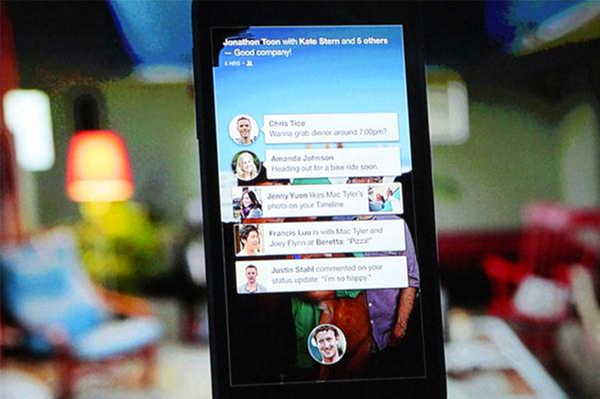Facebook Home: A prettier Motoblur

Mark Zuckerberg proudly showed off Facebook's new Home app recently; an Android home screen replacement that pushes network updates to the phone. Facebook Home is designed to provide a constant stream of your friends' updates right on both the lock screen and home screen of your Android phone. It pushes Android firmly behind the Facebook action on phones that can run the app.
Demos of Facebook Home show it to be a slick presentation of what is ordinarily seen on either the Facebook website or in mobile apps. There is a constant stream of all the latest updates and photos posted to the user's news stream on Facebook. It makes following the social network updates automatic, with no action required by the user. Your friends' updates are pushed to the phone constantly, and all you have to do is sit there and watch them unfold.
The reality may soon set in for Facebook Home users as it did for Motoblur users of yesteryear — it's not always a good thing when the social network takes over the phone.
This may sound familiar to long-time Android phone users, especially those who owned early Android phones by Motorola Mobility. Those phones ran a social network streaming service from Motorola called Motoblur. Motoblur was a set of Android widgets put on the home screen and designed to display a steady stream of network updates all the time.
If that sounds a lot like Facebook Home, it's because it was. Motoblur took it even further by streaming not only Facebook updates, but those from Twitter, MySpace, news and weather services. A constant dose of updates, both social network and news of interest, flashed on the Android home screen.
Motorola made this work by tapping into user configured social networks and passing them through its own Motoblur servers. The updates were all aggregated on the server side to keep the processing required at the phone level to a minimum. Even with this aggregation, Motoblur often made the phones of that time slow down to a crawl due to the constant activity going on behind the streaming display. Phones running Motoblur also tended to get poor battery life due to the constant network updating and displaying.
This overhead on the phone led to widespread criticism of Motoblur, as users constantly complained about the interference with phone operation and poor battery life on phones running it. Over time, Motorola toned it down from the total domination of the Android home screen at launch until it was just a fraction of its designed usefulness in reaction to this criticism. This led to Motorola dropping Motoblur development entirely in 2010.
The initial reaction to Motoblur when it was first announced was similar to that of Facebook Home after the launch announcement and demos. Many of us are deeply integrated with our social networks, and having our friends' updates pushed to our phone is compelling at first.
The reality may soon set in for Facebook Home users as it did for Motoblur users of yesteryear — it's not always a good thing when the social network takes over the phone. Sure, the regular Android functionality will still be there, albeit buried under the Facebook functions that will take over the home screen. One of the biggest draws of Android is the ability to customize the home screens to provide a user experience tailored to the individual. That will be totally lost with Facebook Home.
The constant stream of Facebook updates may take an unexpected toll on users. From the demos, it's clear that in addition to the text updates, Facebook Home will be pushing a lot of photos to the phone. Those updates may very well hit phone data plans pretty hard. That will also likely drain phone batteries faster than ever before.
Facebook may soon discover that the massive overhead required to push constant streams to millions of Facebook Home users is much bigger than expected. Conversations with Motorola employees tasked with keeping the Motoblur servers running made it clear that it was difficult to keep up with the massive amounts of data being continually pushed to Motoblur phones. Facebook is already sending data on demand to lots of phones running its mobile apps, but pushing millions of streams constantly may tax things to the limit.
All of that data moving from Facebook to millions of home screens is going to be massive, and carriers will be bearing the brunt of it. That may be fine at first, but if Facebook Home gets adopted by tens of millions of Android phone owners, it's going to get very expensive for the carriers. It may eventually be necessary to recover the cost of data delivery from users. Perhaps a Facebook Home data charge may come to most carriers, and thus, to customer phone bills.
People love Facebook, and they may end up liking Facebook Home too. That's not a given, however, if history is an indication.
Related stories
